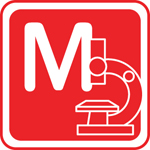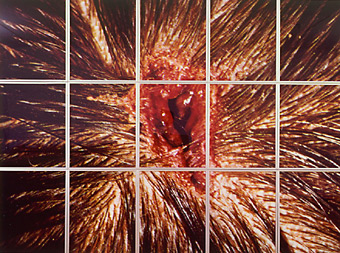careers


Source: National Pathology Week
In order to follow a career in forensic pathology, one must first study medicine and practice as a junior hospital doctor before specialising in histopathology.
Read an interview with Dr Rob Chapman (Home Office Pathologist) and an overview of careers in forensic and legal medicine, both published in the Student BMJ.
Watch an interview with Dr Jo Duflou (Forensic pathologist, Sydney, Australia)
Read a 'classic paper' by Dr Lester Adelson on the role of the forensic pathologist as 'family physician to the bereaved' from 1977.
Listen to an interview with Dr Pornthip Rojanasunan (Thailand).
Short interview with Ben Swift (UK)
Read about Dr Stuart Hamilton's week (UK)
9/11: a student elective in forensic pathology

New York on September 11 2001 - 1st Avenue looking towards Bellevue Hospital and Office of Chief Medical Examiner
(Copyright Richard Jones - All rights reserved)
That night, the work of the Office began in earnest, and I was assigned to one of four teams that were to identify the bodies of victims. In any disaster this is a vital part of the operation, since the pathological evidence of identity, coupled with investigations into clothing and possessions, provides grieving relatives with a degree of 'closure'. Clothing is searched for personal papers, credit cards, identity cards and so on; and, where there are no such papers, the investigation focuses on the colour, style, make and size of the clothes. Tattoos and jewellery also offer vital information, especially when there are inscriptions of any kind. Information recorded on the body itself includes hair colour, texture and style, eye colour, skin colour, scars and teeth; also, each body part was sampled for DNA profiling.
Jones R. New York, 11 September and after. Journal of the Royal Society of Medicine 2001; 94:648
A medical student elective at the Office of the Chief Medical Examiner (OCME), New York City, in late August 2001 started quietly for me but, on a bright September morning, the calm of the OCME was shattered by events unfolding in South Manhattan.
I had been on call with forensic investigators over the course of 10th September to 11th September, attending a suspected suicidal shooting in the early hours of the morning. The autopsy started just before 0900 hrs and, during that examination, we were interrupted by a mortuary technician informing us that 'a plane had gone into the World Trade Centre'. We had heard of the historic crash of a plane into the Empire State Building and thought that this was something on a similar line to that crash.
Intrigued by the thought of being involved in something as historic as that event, I tried to find the investigator with whom I had spent the 'night-shift', with the intention of joining her at the World Trade Centre 'scene'; I was told that she had already left for the WTC site, and I was disappointed. That feeling was soon to turn to one of extreme relief when I heard that the first tower collapsed.
Watching the television, several of us saw the second tower collapse and we were horrified; the Chief Medical Examiner, Dr Charles Hirsch, and my investigator colleague, were to have been setting up an 'advance' OCME staging-post at the site of the towers, and we were immediately concerned as to their safety. In due course, we discovered that they had indeed been caught in the collapse of the towers, and that they were both being treated in hospital for their injuries.
The enormity of the situation struck me then, and my UK medical student colleagues and I decided to try and contact relatives to let them know that we were safe. After a short time we were able to reach them on the telephone; they described a scene of chaos being broadcast live around the world and warned us to stay alert as there were reports of more 'unaccounted-for' planes.
We students spent the rest of the day attempting to offer our services to the NYU and Bellevue hospitals, on either side of the OCME building, but were told that we would not be required. Later that evening, we were to start a gruelling 2 1/2 weeks of 12 hour night-shifts at the OCME assisting in the pathological evidence gathering process, sorting through hundreds of body parts with the aim of establishing the identity of the deceased.
Read more about my elective at the Journal of the Royal Society of Medicine and a letter in response by E Scott Sills.
(Links for 9/11 (Delicious))
Read another account of the forensic pathological response to 9/11 by James Gill (in Forensic Science, Medicine, and Pathology 2006; 2:29-32)
Follow this link for my New York City Pinterest board
forensic medicine career resources
- The role of the forensic pathologist (UK Faculty of Forensic and Legal Medicine of the Royal College of Physicians)
- National Association of Medical Examiners (NAME) - Forensic pathology training programmes
- NAME - 'So you want to be a medical detective?'
- Virtual proofs Exhibition website (Forensic Medicine)
- Faculty of Forensic and Legal Medicine (of the Royal College of Physicians)(https://fflm.ac.uk/)
- forensic education literature resources (Connotea)
- Selecting forensic pathology as a career (American Journal of Forensic Medicine article)
- resources at the Victorian Institute of Forensic Medicine, Australia
essential medicolegal knowledge for medical undergraduates
I have found signs of life in a woman on whose body, certified dead in an ambulance by a young casualty officer, I was about to perform an autopsy.
Simpson CK. Handling a dead body: forensic implications. Health Trends 1977; 9:53-54
- What to do with a dead body (and what not to do when suspicions have been aroused of unnatural causes of death)
- Certification and disposal of the dead
- The role of the coroner and which deaths must be reported
- The preparation of medicolegal reports and the giving of evidence
- The aims of civil litigation and compensation
- The interpretation of injuries
- Sexual assault victim examination
- Principles of medical ethics
- Principles of poisons recognition and treatment
Reference:
Undergraduate medicines legal wrangle. Jones R. Student BMJ 2002; 10:90-91, based on:
- The decline in the teaching of legal medicine. Mant AK. British Medical Journal 1986; 293:1390
- Postgraduate training in forensic pathology. Simpson CK. Proceedings of the Royal Society of Medicine 1971; 64:146-147
teaching forensic/ legal medicine
Teaching in forensic medicine is woefully lacking at undergraduate level and this has serious implications for us all ..
Jones R (2002)
- Undergraduate medicines legal wrangle. Jones R. Student BMJ 2002; 10:90-91
- Undergraduate teaching in legal medicine. Knight B. Medicine, Science, and the Law 1980; 20:148-150
- The teaching of legal medicine in British medical schools. Knight B, Thompson IM. Medical Education 1986; 20:246-258
- Educating medical students about law and the legal system. Williams PC, Winslade W. Academic Medicine 1995; 70:777-786
- University of Dundee - lecture notes on forensic medicine
forensic pathology and art

Bullet Hole (1988) - Matt Collishaw
Source: Wikipedia
Professor Austin Gresham (1925-2009), a Home Office Pathologist based in Cambridge (UK), was said to have inspired the art of Matt Collishaw and Damien Hirst, amongst others, who made up the so-called Britart movement in the early 1990s.
In the early days I was just concerned with commanding imagery, hence Bullet... I wanted to punish the viewer - it was a way of getting their attention. But also I wanted to supply content that had a high level of ... what's the word ... images that demand a high level of social responsibility. Not things that you could look at in a lazy or uncommitted way.
Collishaw in The Sunday Telegraph 1/7/2007
Gresham was not impressed with the 'mis-use' of his work in this context and being an 'inspiration' to the young artists;
But the general public are idiots when it comes to modern art. You can hang up a rat by its tail and call that art and people will believe you. And these artists seem to make a fortune out of it.
Gresham in The Telegraph (Meet the grandfather of Britart) July 2007
NPR/ ProPublica/ Frontline Investigates: Forensic pathology in America
Death investigation in the USA - first in-depth investigation from the NPR/ ProPublica/ Frontline team.
Watch the episode here ...
A follow-up investigation by the NPR/ ProPublica/ Frontline team on forensic pathology and, in particular, paediatric forensic pathology in America.
Watch it online here ...
Historical image of photography at a death scene (pre-DNA era)
Source: Science Against Crime, Kind S
what forensic pathologists do not do
Interview witnesses following a crime
- that is what the police do (compare with the role of forensic pathologists in Silent Witness, a long-running BBC drama, now in its 14th series!)
- For a forensic pathologist's views on Silent Witness, follow this link to the Guardian Newspaper website
Witless Silence - a parody of Silent Witness - by French and Saunders (1999)
Kill their fellow citizens
- Compare with the new recruits to forensic pathology in the 2008 film 'Pathology', who descended into an orgy of blood-lust in their mortuary

Tags
We're in the business of investigating the dead in order to assist the living – there's no other reason for doing it.
Professor Derrick Pounder (University of Dundee)
Read or hear the full interview at Conversations with pathologists

Forensic pathologists on Desert Island Discs
- Professor Peter Vanezis (18/3/2001)
- Professor Francis Camps (10/6/1972)

Becoming a doctor: is medicine really the career for you? Green M & Nolan T
Read reviews and buy it here ...
So you want to be a brain surgeon? Eccles S & Sanders S
Read reviews and buy here ...
A canny consumer's guide to the profession, it should be widely read and consulted by all who are still uncommitted in their medical careers and by those who advise them.
Symonds JC. Journal of the Royal Society of Medicine 200; 94:606
Read the full review here
The forensic pathology section (p.38) offers an insight into a 'typical working day', and the pros and cons related to the job in England and Wales.
Personality: strong, resilient, often extrovert, attention to detail, systematic.






